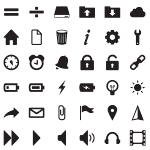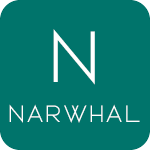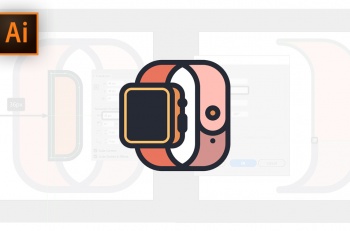Today we have a guest-post from Jesse Snyder, TheWarehouseDesign.com owner and Design Resources creator.
About six months ago, I started an online-based design business called The Warehouse with my fiancée.
We had seen a couple of articles mentioning the idea of creating “passive income”, which is just income based on something you put online for sale. After you create the resource, it passively brings in money. Now, the term “passive income” is somewhat of a misnomer because if you’re doing it correctly, there is nothing passive about it. A more modern term that’s being used is “scalable income” and that is what I will call it from now on.
What types of things do I sell?
This was the first question that we asked ourselves when we decided to sell design resources. The best way to decide what types of resources you should sell is to ask yourself two different questions.
1) What are my strengths and interests in design; am I best at web, illustration, or print?
2) Is there a market for what I want to create?
Both of these questions are very important for different reasons. The first question helps you to decide what type of product you will have most fun creating, and even though this is a business venture, if you are not having fun with it, it will be very hard to motivate yourself to work on the project. The second question helps you to decide if your product is a viable one. There are a lot of different ideas for creative products, but if nobody wants to buy it, the product will be a flop.
How will I be different?
The frightening truth of this kind of business is that there are a lot of people who sell design resources. Every day, new designers are adding their work to the collective pool of resources available. As with any business, if you can’t differentiate yourself from the competition you will have a hard time selling your products. This is one of the lessons it took us the longest to learn. When we first started, we thought that if we made somewhat generic resources it would reach the largest audience possible. So we intentionally tried to keep our products generic and accessible.
It turned out that even though our logic made sense, this strategy wasn’t very effective. We have since learned that being unique is one of the single most important factors to selling our products. Our products that have that little bit of uniqueness are the ones that sell the best and get the best feedback. It’s then that we realized something important; that you shouldn’t be trying to reach the widest audience; you should be trying to find a specific niche and take control of that niche. Now these may seem like simple lessons for someone with a business degree, but we were starting with zero knowledge of business tactics, a situation that many designers find themselves in.
How will people hear about my product?
Marketing your product is one of the hardest things to do if you don’t already have a following online. You can have a really great product, but if nobody knows about it, you’re not going to make any sales. There are way too many strategies and tactics to marketing online to cover here, but I can give a couple of the basic ways that we market our products.
1) Set up an email newsletter that delivers GOOD CONTENT. If it doesn’t have good content, people will just unsubscribe or delete the newsletters.
2) Use social media and engage with your users. Post articles about your field, speak with your customers.
3) Build your own website to sell products through. Even if you don’t sell products directly through the website, having an online presence adds legitimacy to your company and products.
4) Leverage online marketplaces and use pre-built communities to your advantage. The last point about using pre-built ommunities and marketplaces to your advantage is one of the best things we’ve done for our business. We started out just selling on our website, which was time--consuming to maintain and not very successful overall.
Then we discovered websites like Creative Market ( check out thewarehousedesign and vectorgraphit on Creative Market ), where there is already a community of designers looking to buy your products! How much easier can it get from a marketing standpoint? Any type of resource marketplace will generally take a small portion of your sales, but that is made up for by the fact that they have a pre--built community of people that are ready and willing to buy your products.
Some final tips
Here are a couple of final things that we have learned or observed while working on our online business.
1) Create high-quality resources – It goes without saying but making stuff fast and cheap usually isn’t the way to go. As they say, “the cream rises to the top”. If your products are high--quality, people will feel better about paying for them.
2) Be patient – It takes a long time to create the resources, gain any type of following and sell your stuff. Be patient and keep working at it constantly and it will get better.
3) Be confident – It takes a certain amount of confidence to ask people to give up their hard earned money to buy your products, but being confident in your product goes a long way towards making others confident in it. If you can’t stand by your product, why will anybody else?
4) Don’t give up! – As I said, it takes a long time and a lot of work to get your products sold. There are many highs and lows along the way. For us, some days are incredibly frustrating when you can’t get an icon design or website template just right, but it’s made up for on the days when positive things happen like bringing in a lot of sales or signing a promotion deal with another online business. I hope these tips for selling design resources was helpful. If you have any questions about our process, experience or company, please feel free to contact me at [email protected].
Check out the step-by-step tutorial about how to create and sell vectors on microstock sites!










